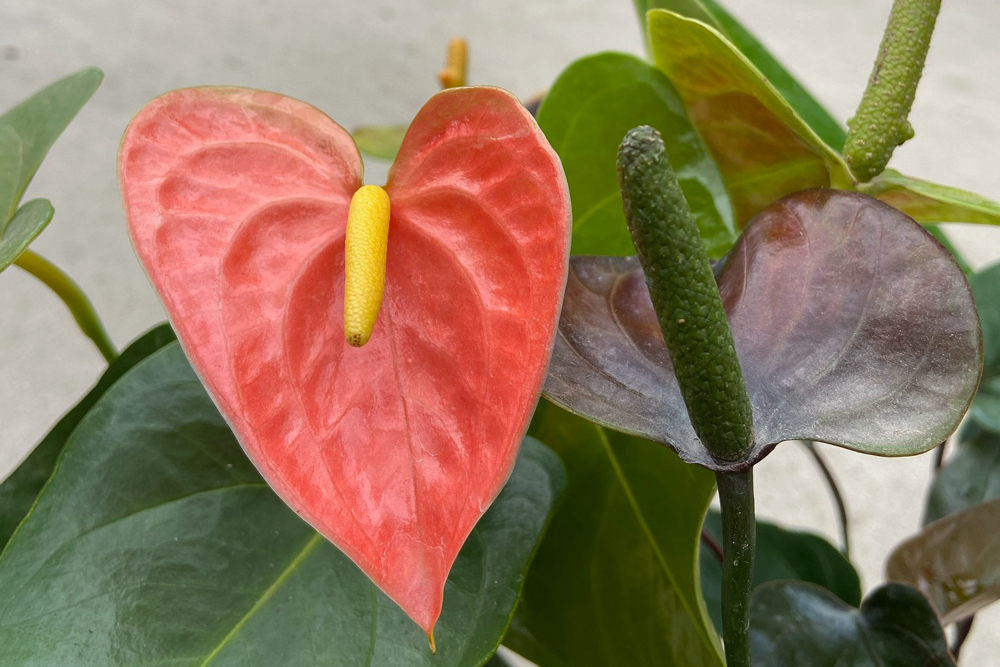Anthuriums, known for their striking, heart-shaped flowers, are part of the Araceae family and hail from the lush rainforests of Central and South America. Their journey into cultivation began centuries ago, with Europeans first coming into contact with these vibrant plants during their exploratory voyages. The formal classification and selective breeding that started in the 19th and 20th centuries have yielded a plethora of cultivars showcasing an array of colors and shapes. Today, anthuriums are celebrated globally as ornamental plants, not just for their beauty but also for their contribution to biodiversity and genetic variation, which continues to be a focus of ongoing study and preservation efforts.
Large Family
Anthuriums, with over 1,000 species, are one of the largest genera within their family. These adaptable plants are often called ‘Flamingo Flowers’ due to their flamboyant spathes resembling the exotic bird. Interestingly, what is frequently mistaken for the flower itself is a colorful, modified leaf that frames the actual flowers on the central spadix. Aside from their aesthetic appeal, anthuriums serve a practical purpose by purifying the air—absorbing harmful substances like ammonia and formaldehyde, thus contributing to a healthier indoor climate.
These plants are not only limited to the common red; they display a spectrum of hues, including pink, white, orange, green, and purple. Their blooms can persist nearly year-round, with each one lasting up to eight weeks under ideal conditions. One of the more extraordinary features of some anthuriums is their thermoregulation ability. Certain species can heat their spadix to disperse enticing scents that attract pollinators—a remarkable adaptation to their native tropical habitats.
Care
Anthuriums flourish indoors in a state like New Jersey, provided they receive bright, indirect sunlight. They must be kept within a comfortable temperature range of 65°F to 80°F. They thrive in highly humid environments and require a well-draining potting mix to prevent waterlogging. Careful watering allows the soil to maintain moisture without becoming oversaturated, protecting the roots from rot. Regular fertilization is beneficial during the growing season. Monitoring for pests and diseases is critical, and repotting, when necessary, ensures they have adequate space to grow.
Propagation
Propagation methods for anthuriums vary from seeds to division and cuttings, with division being the most straightforward for amateur gardeners. This allows for the separation of offshoots from the parent plant during repotting, facilitating the spread of these captivating plants. With their exotic appearance, air-purifying abilities, and ease of care, anthuriums have become a beloved feature in homes and gardens worldwide.

